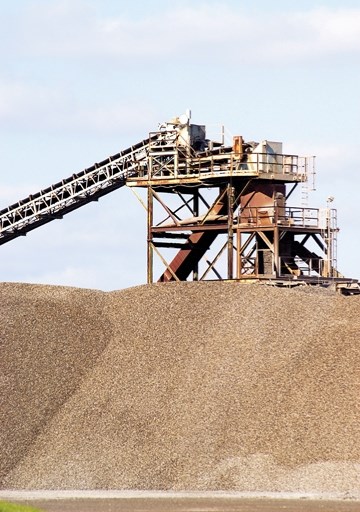Residents representing diverse interests convened at Rocky View County (RVC) municipal hall to discuss the future of gravel pit development in the region.
The first Aggregate Resource Plan (ARP) Stakeholder Advisory Committee meeting took place on Aug. 15. The mandate of the newly formed committee is to come up with a plan for gravel pit development in the county that respects residential interests, and balances environmental sustainability with resource extraction and development.
According to RVC, the plan will, ideally, include recommendations on the, “location criteria for aggregate extraction sites, appropriate setbacks between aggregate extraction uses and other land uses, and performance measures to manage site design and minimize the impacts of aggregate extraction.”
The ARP committee was convened with the hopes of finding a way past the deadlock and conflict seen in the municipality over aggregate resource extraction these past number of years.
Committee members include Chair Barbara McNeil, and Members Gerald Bietz and John Weatherill, who represent residential interests, Hazel George and Tom Foss, who represent agricultural interests, and Dale Soetaert and Monty McNair, who represent the aggregate industry.
The first meeting of the ARP committee on Aug. 15 might represent a sign of things to come as each of the members was asked by Chair McNeil to lay out there opening positions.
“The first thing is the interest in protecting the country residential lifestyle,” said Member Weatherhill, when asked to state his position. “(That) involves peace and quiet, wilderness, and so forth. We recognize, of course, there is a societal need for aggregate development, and we support that. But there is probably also few industries that have the potential to be so disruptive to country residential living in very close proximity– because of the noise, the dust and impacts on groundwater and surface water, etc.”
Member Beitz largely agreed with Weatherhill’s position, but added ecological sustainability also had to be added into the equation to make a good resource extraction plan going forward.
“I came to this whole conversation through my role at Big Hill Creek Preservation Society,” he explained; “so our focus has been local in regard to the gravel industry, and its impacts. In Big Hill Creek Preservation Society primary focus has been on groundwater impacts on Big Hill Springs Provincial Park, and Big Hill Creek, as a result of groundwater impacts.” See related story Gravel pit gets green light from province despite opponents' objections - AirdrieCityView.com
Beitz explained, for him, sitting on the committee wasn’t just about the Big Hill Springs Park gravel pit, which was approved by the provincial government recently despite local community objections.
It was, he said, a much broader conversation that residents and policymakers should be having county-wide to understand the ecological impacts of the gravel industry.
As expected, Members Soetaert and McNair had a slightly different view of what the County’s priorities should be when it comes to making plans around future gravel extraction.
“While the industry is trying to run a business,” said Soetaert, “we are, maybe (also), altruistic [by] trying to contribute to the economy. We are also trying to show how we can be responsible through education and transparency, and that we can be sustainable operators.”
Soetaert hoped the work of the committee would come to the conclusion that the gravel extraction industry is necessary, and come up with a plan to work with industry to mitigate any potential impacts of mining this valuable and much-needed resource.
“There has been lots of improvement over the last few years in practices,” he stated. “Aggregate exists where it exists. From an industry perspective we believe it is better to extract it, and then have ultimate (end) land use. The industry thinks we can reduce impacts and we can reduce conflicts, and we can reduce misconceptions with our industry. Hopefully we can do this through this (ARP) process.”
Member George, who is an agricultural resident from east Rocky View with a longstanding gravel pit on her land, said she hoped committee members could get past the rhetoric on the issue and come up with a good plan for responsible aggregate extraction in RVC going forward.
“We have lived over 40 years with gravel pits all around us in that (east Rocky View) area because, as we have heard, gravel is where it is, and that’s where it has to come from,” she said. “While we aren’t as tightly populated as the western side of Rocky View County, farmers and ranchers over the years have learned to co-exist with gravel pit operations … Farmers and ranchers tend not be rolling in the dough, as it were, in some years. Having that added income coming in to upgrade some of the things in their operations has always been a godsend.”
To view the entire video of the the first public meeting of the Aggregate Resource Plan (ARP) Stakeholder Advisory Committee, and all future meetings of the committee, residents can watch at www.rockyview.ca/meetings-hearings by clicking on under “Past Meetings” the “ARP Stakeholder Advisory Committee” tab.



